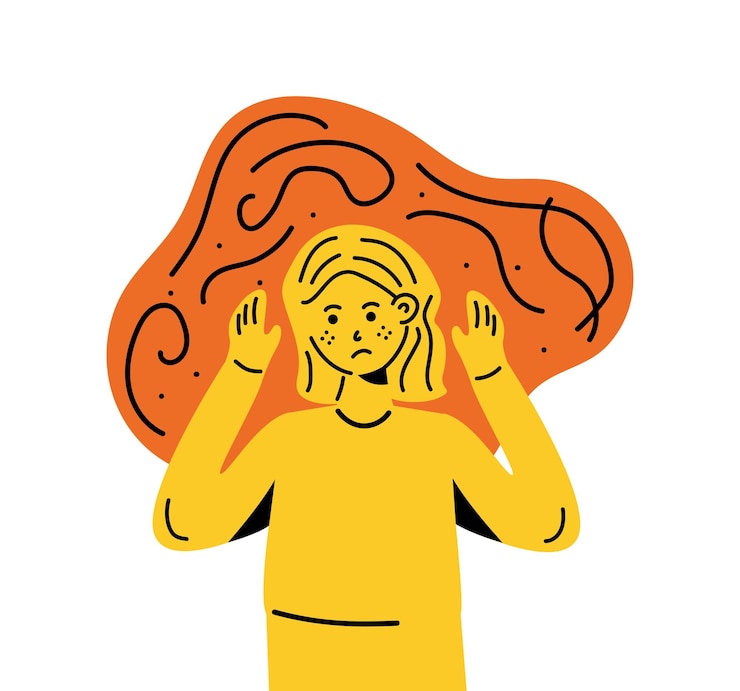
Obsessive-Compulsive Disorder (OCD) is a long-term anxiety condition that generally includes two main symptoms: persistent and distressing thoughts (obsessions) and repetitive, uncontrollable actions or rituals (compulsions). What makes OCD particularly unique is how differently it can appear in individuals, with a wide variety of obsessions and compulsions creating subtypes of the disorder.
While OCD is often categorized into four main types—contamination and washing, checking, symmetry, and taboo thoughts—the reality is that it’s incredibly diverse. It can take on countless forms, and it’s not unusual for someone to experience multiple subtypes at once. There are also various lesser-known forms of OCD, such as relationship OCD, pure OCD, hoarding OCD, sensorimotor OCD, and religious OCD, which we’ll explore below.
1. Relationship OCDThis type focuses on obsessive thoughts and compulsive behaviors related to a person’s romantic relationships. Individuals with relationship OCD constantly question their connection to their partner, second-guess their own feelings, and fixate on their partner’s intentions or flaws. Common concerns may include doubts about compatibility, fears of upsetting their partner, or overanalyzing everything they say or do.
As a result, they often seek excessive reassurance from their partner, friends, or family, which can strain the relationship. In extreme cases, they might end the relationship due to these fears, only to feel more anxiety and doubt afterward.
2. Pure OCD (Pure-O)
Unlike other types of OCD, Pure OCD is characterized by obsessive thoughts without any apparent physical rituals. However, this doesn’t mean there are no compulsions—these are simply internal or mental acts, such as replaying thoughts, seeking reassurance, or using “good” thoughts to cancel out distressing ones. Subtypes of Pure OCD include obsessions related to harm, sexual orientation, pedophilia, or religion.
Although the term “Pure-O” is often used informally, medical professionals refer to these cases as mental-compulsion OCD. For those living with it, the lack of visible physical behaviors doesn’t reduce the impact of the condition or its toll on their mental health.
3. Hoarding OCD
Hoarding OCD occurs when someone has extreme difficulty discarding items, even if they acknowledge that the items no longer hold value. Unlike hoarding disorder, which stems from an emotional attachment or perceived value of possessions, hoarding OCD is driven by fear or anxiety.
There are three common forms of hoarding OCD:
– Deprivation hoarding: A fear of needing the item in the future.
– Preventing harm hoarding: Anxiety that discarding the item could indirectly cause harm, such as a broken object injuring someone.
– Emotional hoarding: Holding onto items due to sentimental or nostalgic reasons.
The result is an overwhelming accumulation of clutter that can greatly disrupt daily life.
4. Sensorimotor or Somatic OCD
This type centers around hyperawareness of bodily functions that most people don’t consciously think about, like breathing, blinking, or swallowing. Individuals with sensorimotor OCD obsess over these actions and may engage in repetitive behaviors to “control” them. For example, someone might count each breath, analyze their blinking patterns, or try to avoid swallowing excessively.
This heightened awareness extends beyond their own body, as they may also fixate on the actions of others. Over time, these obsessions can interfere with their ability to focus or enjoy daily activities.
5. Religious OCD
Religious OCD, or scrupulosity OCD, involves intrusive thoughts and compulsions linked to religious beliefs or morality. People with this form of OCD often fear that their thoughts or actions may be sinful, blasphemous, or immoral. They may feel intense guilt over intrusive or unwanted thoughts and try to atone through excessive prayer, rituals, or compulsive reassurance-seeking.
Unlike someone who can dismiss fleeting thoughts, individuals with religious OCD struggle to let go. The more they try to suppress these thoughts, the more they resurface, creating a cycle of guilt, anxiety, and compulsive behavior.
Conclusion
OCD is a complex and deeply personal condition, with each individual experiencing it in their own way. Subtypes like relationship OCD, Pure OCD, hoarding OCD, sensorimotor OCD, and religious OCD may differ in focus, but all share the core features of obsessive thoughts and compulsive behaviors.
OCD is valid no matter how it manifests, and support is available. Seeking professional help can provide the tools and treatment needed to manage symptoms and live a more balanced life.